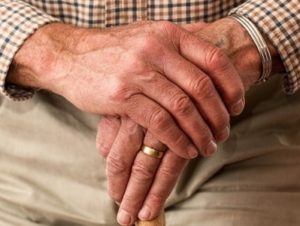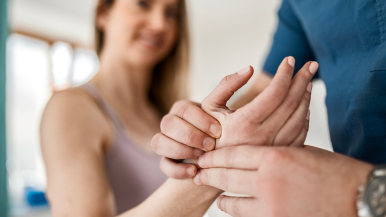DeQuervain’s Tendonitis
 De Quervain’s tendonitis occurs around the base of the thumb when the tendons become constricted or irritated. The swelling of the tendons along the thumb and the side of the wrist can often times cause pain and tenderness. Pain will be most noticeable when performing movements such as forming a fist, grasping or gripping something or when turning the wrist. Treatment and recovery time vary depending on what treatment method is utilized to provide relief.
De Quervain’s tendonitis occurs around the base of the thumb when the tendons become constricted or irritated. The swelling of the tendons along the thumb and the side of the wrist can often times cause pain and tenderness. Pain will be most noticeable when performing movements such as forming a fist, grasping or gripping something or when turning the wrist. Treatment and recovery time vary depending on what treatment method is utilized to provide relief.
Symptoms of De Quervain’s Tendonitis
If De Quervain’s goes too long without being treated, pain can move into areas like the thumb, up into the forearm or both. Common symptoms typically reported by patients include:
- Pain near the base of the thumb
- Swelling near the base of the thumb
- Difficulty moving during activities involving grasping or pinching
- A “sticking” or “stop-and-go” sensation in the thumb
Causes of De Quervain’s Tendonitis
A common condition that’s often associated with De Quervain’s tendonitis is chronic overuse of the wrist. Other causes of De Quervain’s tendonitis include:
- Direct injury to the wrist or tendon
- Excessive scar tissue that can restrict movement of the tendons
- Inflammatory arthritis, such as rheumatoid arthritis
Treatment for De Quervain’s Tendonitis
Treatment for De Quervain’s tendonitis involves the use of medication, corticosteroid injections, physical therapy and, in severe cases, surgery.
Medication
Ibuprofen and other over-the-counter pain relievers can help to reduce pain and swelling. Prescription medication may be used in select cases. Injections of corticosteroid into the tendon sheath to reduce swelling may also recommended by a physician.
Physical Therapy
There are several physical therapy treatments that may provide relief for De Quervain’s Tendonitis. These include:
- Immobilizing the thumb and wrist with a splint or cast
- Limiting repetitive thumb movements
- Avoiding pinching with the thumb when moving the wrist from side to side
- Applying ice to the affected area
- Anti-inflammatory medication
- Avoiding activities causing pain and swelling
- Corticosteroids
Surgery
Using a small incision, a surgeon will cut the sheath which relieves pressure off the tendons and help the tendons to move more freely. During surgery, if a patient is found to have inflamed tissues or small cysts, additional procedures may be conducted. The operation can be done under local, regional or general anesthesia.
Most times, recovery is just a few weeks and most patients see a full return to function.



